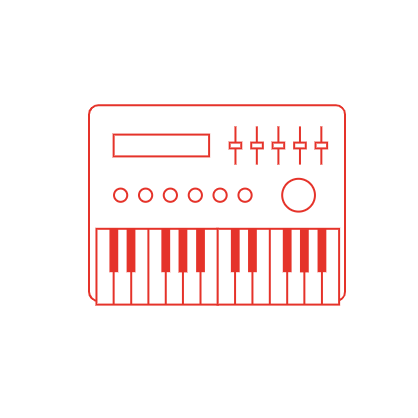RME
Fireface UFX III
NEW FEATURES IN UFX III
The UFX III replaces the UFX+. It looks identical and has the same number of I/Os and main features. The only obvious difference is the lack of a Thunderbolt port on the back.
The UFX III, however, is a completely internally redesigned version of the UFX+. The entire analog board is new, including new AD and DA converters that offer up to 7 dB better THD+N values and several dB better signal-to-noise ratio. The digital board is also new, offering some additional features thanks to a revised design and updated high-tech components.
New features and changes compared to the RME Fireface UFX+

SteadyClock FS
The UFX III is capable of efficiently suppressing even low-frequency jitter below 50 Hz on word clock, SPDIF, AES and MADI input signals. At the same time, lock, sync and varipitch behavior remain at the usual RME level: fast, reliable, compatible.
USB 3 Class Compliant
The UFX III is RME's first audio interface with full support of USB 3.0 in Class Compliant Mode. This means that all channels are available even in driverless mode, whether Linux, Mac or iPadOS. This also applies to the iPad Pro with USB-C port, which provides up to 94 channels for recording and playback in TotalMix FX for iPad as well as at the system level. DAW apps like Steinberg's Cubasis admittedly only access the first 24 channels on the iPad. But with the free routing and integrated loopback function of TotalMix FX for iPad, these 24 channels can be put together from any of the up to 94 available, i.e. also recorded via ADAT and MADI and played back on any of the 94 output channels. However, this also applies to the previous USB 2 CC version with a maximum of 24 channels I/O. One difference, however, is that all 54 channels are now available at 96 kHz and all 34 channels at 192 kHz. With USB 2 CC iOS, the number of channels at 96 kHz is already limited to 24 channels, and at 192 kHz even to 12 channels.

Triple AES/SPDIF I/O
The UFX III now features three separate AES/SPDIF receivers and transmitters. In the Uni mode, which is still available, there is only one AES/SPDIF receiverand transmitter. If the AES In is placed on Optical 2, a SPDIF signal applied there will automatically appear on the AES channel. Advantage: when changing the sample frequency the channel does not change. Disadvantage: the AES In (XLR) is no longer available, AES Out and Optical 2 Out always output the same signal.
New is the Multi-Mode, in which XLR as AES I/O and optionally one or both ADAT I/Os as SPDIF optical I/Os are available - so up to three separately usable AES/SPDIF I/Os simultaneously. Disadvantage: If ADAT2 is used as SPDIF I/O, the I/O inevitably shifts by 4 or 6 channels due to the channel reduction of ADAT1 at Double and QuadSpeed.

Track Names for DURec
Remap Keys
Remap Keys is not only useful for stand-alone operation and direct access to some hardware functions, but can also be used to invoke the TotalMix window. Configuration can also be done directly in TotalMix FX in the ARC & Key Commands dialog. The buttons here are labeled A (MIC/GAIN), B (REC/PLAY), C (CHAN/MIX), and D (SETUP/REV). For TotalMix FX, there are even 52 different functions/actions available.
Driver and Firmware
Lock Keys
DC Coupled Outputs



